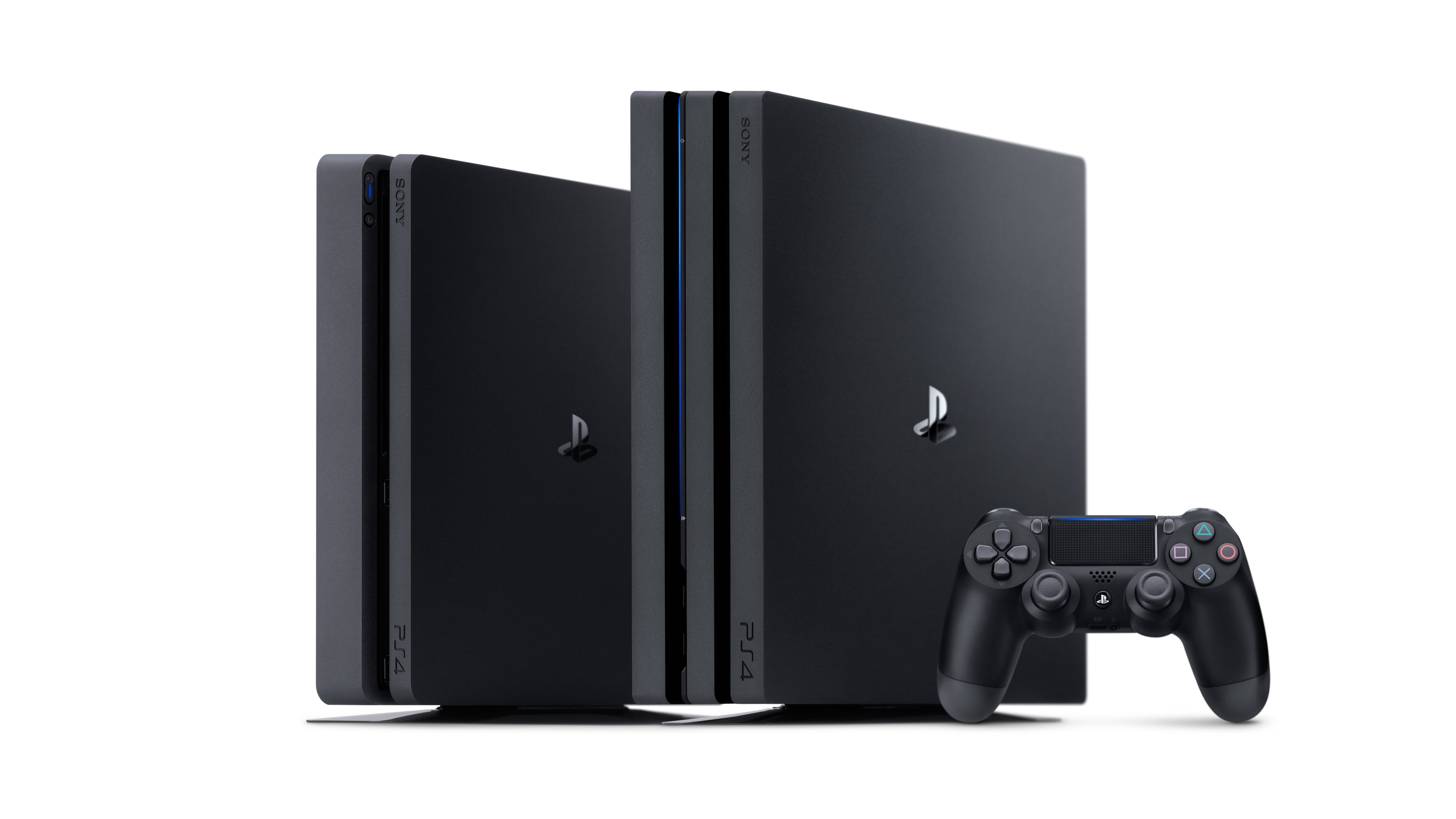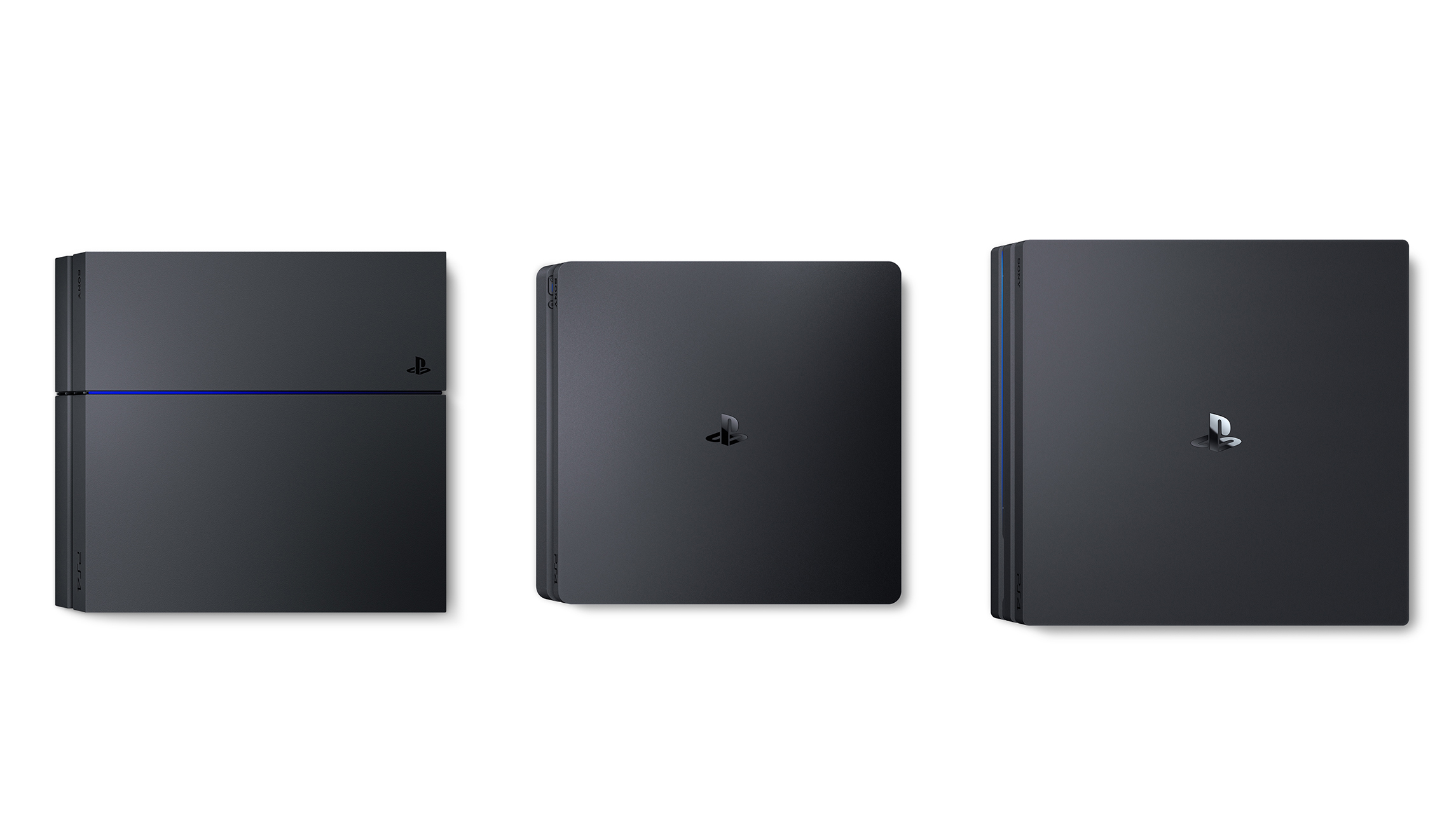
There are currently two versions of Sony’s PS4 console out in the wild.
In one corner you have the standard PS4, which has recently been re-released in a swanky slim chassis.
In the other you have the higher-spec PS4 Pro , which offers 4K and HDR playback across games and movies.
The catch, though, is only a fraction of the PS4’s total library supports these features.
Going forward, all PS4 games will need to include a “Pro Mode”, which will allow them to make the most of the Pro’s enhanced hardware. This pretty much guarantees that there’ll be a lot of Pro content in the future, but right now it’s slim pickings.
We’ve now had some time to digest what the new console is capable of – highly detailed 4K/HDR gameplay, Ultra-HD media streaming from apps like Netflix and the new Pro Mode – but now it’s time to work out how it shapes up to the existing PS4 hardware.
Appearance
- PS4 Pro is bigger, but not by much
- Sleeker finish on top of the Pro console
The most obvious difference between the original PS4 and the PS4 Pro is the addition of an extra layer onto the console.
While the original PS4 had two layers separated by a gap for the disc drive and two USB ports, the PS4 Pro has three layers.
Thankfully this hasn’t lead to too much of an increase in its dimensions. The original PS4 measured 275.1 x 305.1 x 53.1mm, while the Pro measures 295 x 327 x 55mm. That means it’s slightly bigger, it’s 2cm deeper and 2cm wider, but interestingly it’s more or less the same height.
It’s also half a kilogram heavier, or just over a pound.

Connections
- PS4 Pro has an extra USB port
- PS4 Pro also has an optical audio port
- Original PS4 uses HDMI 1.4, Pro uses HDMI 2.0a
In terms of rear connectors, the PS4 Pro is nearly identical to the standard PS4, aside from the addition of an extra USB 3.0 port – which should be pretty useful if you’re planning on hooking up a PlayStation VR, since the headset takes up a USB port when it’s plugged in.
An extra USB port is an excellent inclusion, since the PSVR brings back the Move Controllers which each need a USB port to charge.

Unlike the new slimmer PS4, the PS4 Pro does include an optical audio output on its rear like the original launch PS4.
The final difference between the ports on the back of the console is the HDMI port. While the original PS4 had an HDMI 1.4 port, the PS4 Pro has an HDMI 2.0 port to allow it to output at 4K resolutions (more on that later).
Important to note is that you don’t need to upgrade your HDMI cable to take advantage of 4K, despite what Sony is claiming on its official FAQ. Any HDMI cable that can handle 1080p can do 4K just fine.
Optical drive
- Both systems have Blu-ray drives
- Neither are capable of 4K Blu-ray playback
This is a particularly sore spot for Sony’s new system. Despite speculation to the contrary, the PS4 Pro does not include an Ultra HD Blu-ray player. It can play Full HD 1080p Blu-ray discs just the same as the original PS4.
Sony’s decision to omit a Ultra-HD Blu-ray drive from the system is puzzling, considering that Blu-ray support was one of the major boons of the PS3. Now, Sony might be saving that for another console down the road, however, considering that Microsoft’s Xbox One S already has the high-end disc drive, it would’ve benefitted Sony to launch the Pro with one as well.
Internals
- PS4 Pro has better GPU performance (4.2 TFLOP vs 1.84)
- PS4 Pro has 802.11ac Wi-Fi antenna and Bluetooth 4.0
- PS4 Pro has an additional 1GB of DDR3 RAM
The internals are where we see our first major difference from the original PS4.
Both consoles share an AMD Jaguar x86-64 8-core CPU, which has seen a 30% boost in clock-speed from 1.6GHz to 2.1GHz.
Meanwhile the GPU has seen a much bigger performance increase. Its power has been doubled, and its clock-speed has been boosted from 800MHz to 911MHz.
In total the GPU has jumped from 1.84 TFLOP in the launch PS4 to 4.2 TFLOP in the Pro. This bump is in order to accommodate the new 4K functionality.
The Wi-Fi of the Pro has also seen an upgrade to include 802.11ac and a Bluetooth bump to v2.1 to v4.0. Both of these upgrades were also seen in the new slim PS4.
The Pro also has an additional 1GB of DDR3 RAM, which will be used for non-gaming apps to free up the faster GDDR5 RAM for gaming performance.

4K TV Performance
- PS4 Pro supports 4K/HDR
- Original PS4 just supports HDR
- Developers decide how to use the extra power
This is the big one – the main reason it’s worth making the jump from the original hardware to the PS4 Pro. The PS4 Pro supports 4K output, as opposed to the standard PS4’s Full HD 1080p resolution.
When it comes to streaming services such as Netflix this means that the console will be able to play movies and TV shows in their maximum resolution, but unfortunately the lack of an Ultra HD Blu-ray drive means that the console will not be able to play physical 4K media.
The PS4 Pro supports 4K output, as opposed to the standard PS4’s Full HD 1080p resolution
Games are slightly more complicated because it will be up to developers to decide how they want to use the PS4 Pro’s extra muscle.
For example, EuroGamer reports that the Pro version of The Last of Us will have two options, one that runs at 30fps with a native 4K resolution, and one that runs at 60fps at a lower resolution (that has yet to be revealed).

Other games such as Days Gone will be upscaled to achieve a 4K output, but reports indicate that the upscaling process used is more clever than simply stretching the image over a larger number of pixels.
A final game shown to the press, Deux Ex: Mankind Divided, reportedly did not handle its upscaling well at all.
The takeaway seems to be that achieving good 4K performance will need developers to be clever about the balance they strike between native rendering resolution and upscaling technologies used.
Developers to be clever about the balance they strike between native rendering resolution and upscaling technologies used
The PS4 Pro is not powerful enough to run a game at 4K with all the graphical bells and whistles turned on, but with some compromises the results are reportedly impressive.
Although HDR support is new with the PS4 Pro, this same functionality is set to come to launch PS4s via a firmware update. Check out our full guide to HDR for exactly what that means for how games will look.
In terms of loading times, the PS4 Pro offers a small improvement over the stock PS4, but if you’re looking for a boost in loading times, then you’ll see more of an improvement if you upgrade your launch PS4 with an SSD.
1080p TV Performance
- Some games play at higher framerates on PS4 Pro
Although the PS4 Pro is meant mainly as an accompaniment to 4K televisions, the console will also give a graphical boost if you’re playing on a 1080p screen.
But while some of these enhancements are intentional, such as using supersampling to enhance the amount of detail in a given scene, others are not.
PS4 Pro will also give a graphical boost if you’re playing on a 1080p screen
The Last Guardian, the recently released game from Team Ico, has launched with some framerate issues that are present on both the PS4 at 1080p, and the PS4 Pro at 4K.
But a performance analysis has revealed that these issues almost completely disappear if you force the game to run in 1080p mode on a PS4 Pro by changing the system settings.
We don’t think this is an intentional feature of the Pro, but if this trend continues in the future it might make the Pro a much more necessary upgrade for 1080p TV owners.

PlayStation VR performance
- PS4 Pro offers improved PSVR experience
- …but it’s not a major difference
Although prior to the PlayStation VR’s release there were rumors circulating that the headset’s performance on launch consoles was going to be ‘terrible’, now that the hardware is out the distinction appears to be much more subtle.
In fact a recent analysis by Digital Foundry suggests that in some games the difference between PS4 and the PS4 Pro can be a struggle to find.
Other games appear sharper on the Pro because of how the developers have enabled super-sampling techniques, effectively rendering games at a higher resolution in order to enhance detail levels.
The differences between the two consoles are too slight to conclusively recommend the Pro on the basis of VR performance alone
In Robinson: The Journey for example details are much crisper, and textures benefit from a higher level of texture filtering.
The bottom line with the PlayStation VR is that the differences between the two consoles are too slight to conclusively recommend the Pro on the basis of VR performance alone.
If this changes in the future as developers get better acquainted with the PS4 Pro then this may change, and we’ll update our thoughts accordingly.
Conclusion: A substantial upgrade short of a generational leap
The PS4 Pro is undoubtedly a substantial step up from the PS4, but ‘true’ 4K gaming is difficult for it to achieve without compromise.
The biggest physical difference between it and the standard PS4 visually is the addition of an extra layer, but the internals have also been beefed up considerably. The GPU is a great deal faster, and although the CPU is architecturally similar it’s been clocked at a faster speed.
So should you make the upgrade from your existing PS4? The answer largely depends on if you have a 4K TV or plan on upgrading to one in the coming months. If you are, then the PS4 Pro will present numerous visual benefits. If you aren’t, well, there’s likely anything on the PS4 Pro that will be worth the extra money, at least not yet.
That said, without having a system in front of us this is all just conjecture – we’ll wait for our full review when the console is released in November to make that decision with any finality.
Source: techradar.com









































